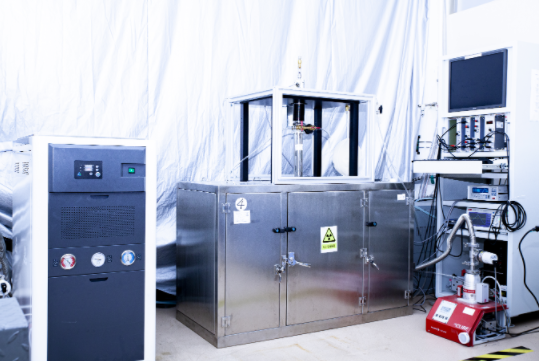Name: In-Situ Mössbauer Spectrometer
Composition:
-
Digital Mössbauer Spectrometer MFD-500A, including both transmission and scattering modes.
-
Mössbauer Data Acquisition System MOSS-MCS2.
-
Mössbauer Radioactive Source ⁵⁷Co(Rh) (1.85 GBq).
-
Mössbauer Spectrum Analysis Software MossWinn 3.0i XP.
-
In-situ Treatment and Performance Testing System for Catalytic Materials, including online chromatographic analysis.
-
Radiation Protection and Instrument Support System.
Main Functions:
In addition to conventional Mössbauer characterization, this spectrometer is primarily used for in-situ identification of the existence states of Mössbauer elements such as iron and tin in catalytic materials under working conditions. It can obtain information on their oxidation states, coordination numbers, local symmetry, magnetic field strengths, bonding strengths with carriers, active sites, and active phases of catalysts. This provides direct assistance in exploring the mechanisms of activity and selectivity formation for various catalytic materials. The in-situ system is suitable for studying the structure-activity relationship and catalytic mechanisms of iron-containing catalytic materials in multiphase thermal catalysis, such as CO oxidation, selective oxidation, water-gas shift reaction, Fischer-Tropsch synthesis with iron-based catalysts, CO₂ hydrogenation, ammonia synthesis and decomposition, and solid-state hydrogen storage materials. The instrument can switch freely between transmission and reflection modes, providing detailed information on both bulk and surface states of the elements in the samples. This platform is open to researchers both within and outside the institute, as well as from domestic and international communities.
